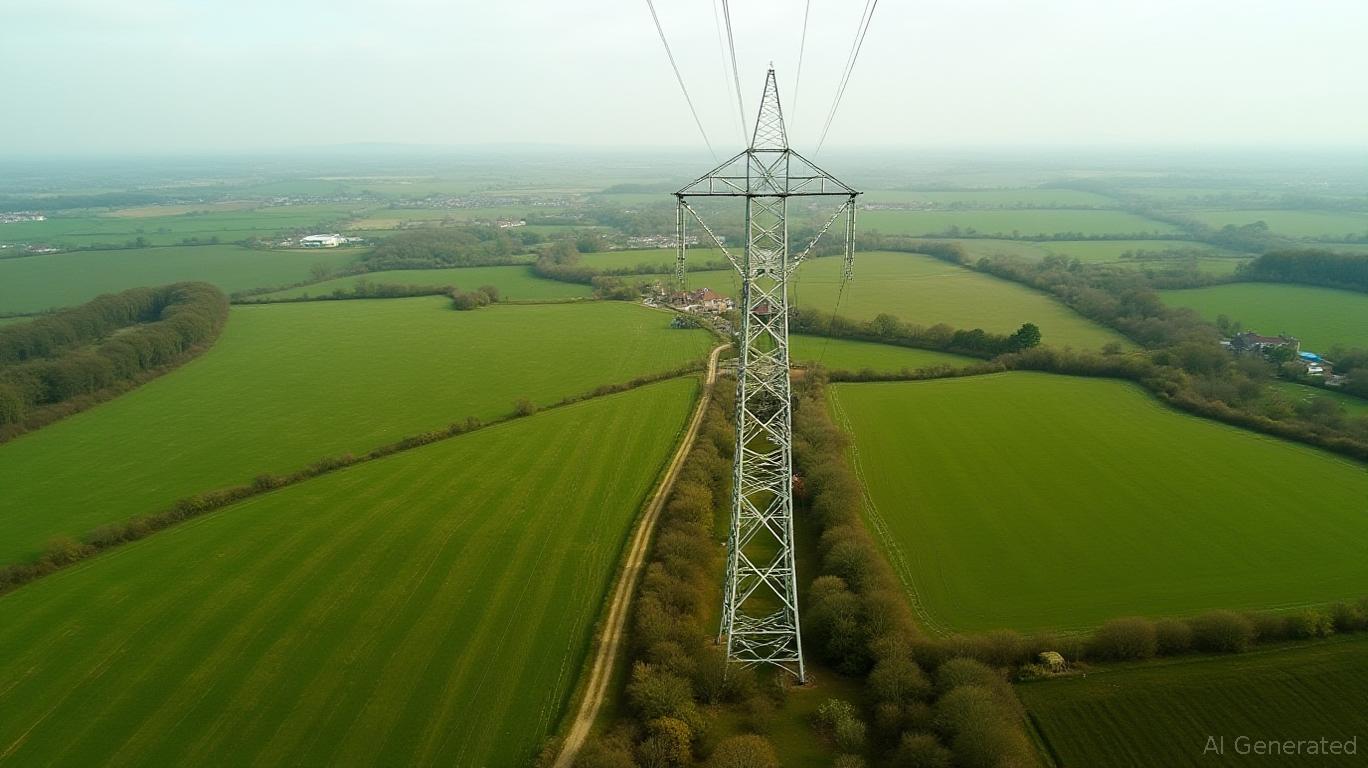National Grid’s Rate Plan: Navigating Growth, Affordability, and Climate Commitments
National Grid has filed its three-year rate plan for Upstate New York’s electric and gas distribution services, a proposal that seeks to balance infrastructure modernization, affordability for vulnerable customers, and compliance with New York’s aggressive climate targets. The plan, now under review by the New York Department of Public Service (DPS), outlines $1.75 billion in first-year investments across grid upgrades, leak-prone pipeline retirements, and customer support programs. For investors, the filing presents a critical juncture: Will the utility’s focus on long-term resilience and sustainability outweigh short-term bill impacts for customers—and, by extension, regulatory or market headwinds?

Infrastructure Investments: A Prudent Bet on Resilience
The plan’s cornerstone is a $1.4 billion first-year investment in grid modernization, storm preparedness, and reliability improvements. This includes replacing 112 miles of leak-prone gas pipelines over three years—a move aligned with New York’s goal to reduce methane emissions. Additionally, $351 million will fund natural gas system upgrades, while $72 million in shareholder-funded weatherization programs aim to improve energy efficiency for low-income households.
The DPS, which must approve the plan, has emphasized that prudent investments in aging infrastructure are critical to avoiding costly outages and regulatory penalties down the line. For investors, this signals a long-term strategy to future-proof operations, even as upfront costs strain near-term earnings.
Affordability Programs: Mitigating Customer Pushback
While the plan’s financial impacts are significant—residential electricity bills will rise by an average of $14.32 monthly in Year 1, and gas bills by $7.66—the utility has layered in safeguards to protect vulnerable customers. Over $290 million in total bill discounts will flow to low-income households, with $3 million allocated to a health-and-safety-focused weatherization initiative.
These measures aim to preempt backlash from ratepayers, a key concern for utilities in regulated markets. However, investors should monitor whether the DPS accepts National Grid’s proposed caps on bill increases, which are designed to limit cumulative hikes to 1.5% annually for most customers.
Climate and Regulatory Compliance: A Strategic Advantage?
The rate plan’s alignment with New York’s climate goals—such as reducing emissions 40% by 2030—could position National Grid as a partner in the state’s clean energy transition. For instance, the plan prioritizes solar and energy storage interconnection improvements, which are critical for integrating distributed renewable resources.
Joseph R. Peluso Jr. of IBEW Local 97 noted that infrastructure upgrades will also support workforce development, with over 480 new jobs in grid modernization and customer programs. This creates a dual benefit: economic growth in the region and enhanced operational capacity for National Grid.
Stakeholder Consensus: A Regulatory Tailwind?
The DPS’s approval process is likely to favor the plan, as it was co-developed with over 20 stakeholders, including environmental groups, labor unions, and local businesses. Notably, the New York Solar Energy Industries Association praised provisions that lower costs for solar interconnection—a win for both the utility and clean energy developers.
However, the DPS will scrutinize the prudence of National Grid’s spending. If approved, the plan’s phased rate increases could stabilize investor confidence, as they avoid steep upfront shocks to customer bills.
Conclusion: A Steady Hand in a Volatile Landscape
National Grid’s rate plan offers a blueprint for utilities navigating the twin challenges of climate mandates and affordability pressures. With $1.75 billion in Year 1 infrastructure spending and a focus on low-income protections, the plan prioritizes long-term resilience over short-term profits—a strategy that aligns with regulated utility models.
For investors, the key risks are regulatory delays or cost overruns, but the DPS’s collaborative approach with stakeholders suggests a favorable outcome. Meanwhile, the DPS’s scrutiny of bill impacts—particularly for gas customers, whose rates are projected to rise by $9.18 monthly in Year 3—will determine whether National Grid can sustain growth without triggering consumer or political pushback.
The data paints a cautiously optimistic picture: the plan’s job creation, affordability measures, and alignment with climate goals could solidify National Grid’s position as a reliable partner in New York’s energy transition. For investors, this is a calculated bet on a utility that’s investing heavily today to secure stable returns tomorrow.


_442a2dcc1749832873286.jpeg)
_e68fac6d1749831664430.jpeg)






